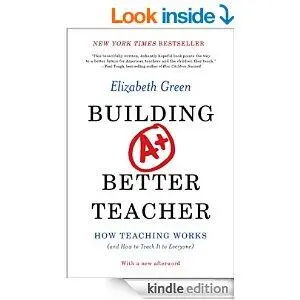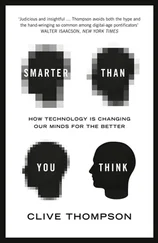Whats in it for me? Learn how teaching works and how we can improve it.

What makes a good teacher? A simple question, but one that is actually difficult to answer.
Are good teachers made, or born? Can we define the qualities of a good teacher, or do you just know it when you see it?
Many researchers have attempted to uncover what it is that makes a truly great teacher great. These blinks offer an inside look into this research as well as the history of pedagogy, or the study of education, and how it has changed over time.
In these blinks, you'll learn about the challenges faced by the education system in America, and why it's lagging behind the rest of the world – even though some of the best pedagogical research comes from the United States.
In the following blinks, you'll also learn:
why a burger from McDonald’s proved the value of education to an investor;
why strict discipline is counterproductive to effective learning; and
why math is important for today’s pupils now more than ever.
The American education system employs a huge number of teachers, yet is under great strain.
Teachers make up the majority of the American workforce. Before we delve into the specific details of the American education system, you first should understand just how big it is.
In 2008, a study conducted by the American Bureau of Labor Statistics concluded that the teaching profession claimed the highest number of employees. In the United States, there are 180,000 architects, 185,000 psychologists, 952,000 lawyers, 3.3 million blue-collar workers – and 3.7 million teachers.
Moreover, this number actually needs to increase. Three million additional teachers will be needed between 2013 and 2020, as the baby-boomer generation retires.
Despite a huge teaching workforce and America’s status as a world power, its education system is still falling behind global standards. This is especially true in mathematics.
In fact, a study commissioned by the U.S. government found that the average Japanese student could outperform nearly 98 percent of American students in math.
Further research by the Dallas Times Herald concluded that out of eight countries that were examined in the study, Japan ranked first in math while the United States ranked last.
The results of these studies were alarming to both politicians and businessmen, particularly because of the way the U.S. economy is changing, shifting from relying on production (such as the auto industry) to relying on information products (such as software and telecommunications).
This shift means that math, science and engineering are more important now than ever.
The Third International Mathematics and Science Study (TIMSS) compared the education systems in the United States, Germany and Japan in the 1990s and found vast differences in teaching methods.
Thus if we want to improve the American education system, we need to start by improving our teaching.
There are two schools of thought on how to improve the American education system.
Most people would agree that we should improve our teaching methods to improve education overall. But how, exactly?
Well, there are two schools of thought on education reform. The first focuses on improvement through accountability.
The accountability argument suggests that children are suffering because teachers don't have enough incentive to excel at their jobs. U.S. President Barack Obama used this idea as the basis of his education policy during his campaign for president.
According to the accountability argument, American education is failing because teachers all receive equal treatment regardless of how effective they are. They receive the same pay raises, evaluations and job protections.
In 2009, Obama stated that the problem isn't that there are good and bad teachers, but rather that we can't identify the good from the bad.
Proponents of the accountability argument call for continual teacher evaluations and student testing. They believe this data can determine which teachers should be rewarded or punished, and how their careers should advance.
The other argument for education reform is based on autonomy. While the accountability argument calls for more government intervention in education, the autonomy argument calls for the opposite.
Proponents here say that teachers are professionals just like lawyers, and they should be treated as such. They'll only improve if they can be trusted, respected and given the freedom to do their jobs.
The Chicago Teachers Union believes in autonomy and argues that the education system in Finland proves the value of it.
Teachers in Finland are highly trusted and respected, and they aren't subjected to a rating system. They have a lot of freedom and they work together to develop curriculum and manage a school. As a result, teaching is a top career choice Finland.
Both of these arguments for reform have merit, but still stem from a fundamental misunderstanding of how teaching works.
Initially, educational research didn’t focus on the actual process of teaching.
While educational research has been conducted in some form since the 1900s, it's only recently that research has turned its focus to the process of actually teaching.
The study of education is called pedagogy. Early pedagogical researchers, however, weren't very interested in the topic at all. In fact, Edward Thorndike, one of the founders of pedagogy, only became interested in the field because it was the best job he could find after studying psychology.
Thorndike's research was focused mostly on psychological issues in schools, rather than education itself. Like Thorndike, most other early pedagogical researchers ignored the practice of teaching simply because they found it boring.
This began to change as the number of teachers rose, and by 1948, there were nearly 1 million teachers in the United States. With the increase, teacher training also became a lucrative business for schools and universities.
Yet the first real attempt to scientifically study teaching resulted in theprocess-product paradigm, developed by education researcher Nate Gage. The process-product paradigm is based on the idea that you can compare the “process” of teaching with its “product” of student learning.
By studying the process and product, researchers could determine which teaching practices were effective.
Gage performed his experiments in a rather formal setting, by bringing teachers into a lab to instruct real students. He videotaped the lessons and tried to control certain variables, such as whether a teacher used a chalkboard. He wanted to see what methods yielded the best results.
The results of his studies were not especially helpful, as he found correlations between arbitrary and sometimes contradictory variables. For example, a teacher walking around correlated with the students paying more attention, but so did a teacher that kept still and only moved her hands.
Clearly, what made a good teacher was still somewhat ambiguous. This led researchers to assume that good teachers were simply born that way.
Education reform grew with more reliable studies and a commercial interest in teaching.
Did you know that one of the biggest breakthroughs in educational research didn't come from the classroom, but from the hospital?
Medical research help shed light on the challenges teachers face, in particular, the research of academic Lee Schulman. Schulman was another researcher who fell into pedagogy after leaving a different discipline, in his case philosophy.
Читать дальше













